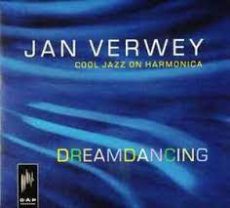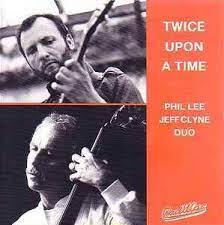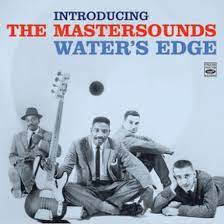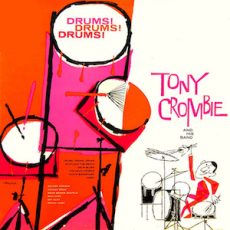
Daily Dose Of Jazz…
Jan Verwey was born on February 24, 1936 in Vlissingen, The Netherlands. A self-taught harpist, he created his own style on this characteristic instrument. He is the only one who plays octaves on the harmonica.
Very much a bebopper and his unique self-developed instrumental technique, he boldly brings about his desired harmony and melody to his solo’s. During his first visit to the United States in 1990 he was immediately rushed into the recording studio by producer Bill Goodwin, Phil Woods drummer, to record The Dutch Connection which led to a performance at the North Sea Jazz Festival in the Netherlands.
In 1991 he was back in the States being the only European invited to play at the festival Celebration Of The Arts in Watergap, as a soloist. He also gave a duo concert with pianist Hod O’brien who recorded with Chet Baker at The Dearhead Inn. In 2007 he was playing at festivals in Medicine Hat and Calgary in Canada. He has toured Europe, playing in Copenhagen, Denmark as well as Frankfurt, Hamburg, Dusseldorf, Rhede and Darmstadt in Germany.
He has a nomination for the Pall Mall Export Award, was a guest soloist with the Metropole Orchestra, in addition to guest performances on television- and radio shows. As a composer he has written for television series, documentaries and commercials.
He has recorded eight albums as a leader with his last being his 2019 The Music of Horace Silver. Harmonica player Jan Verwey, who plays bebop and cool jazz, continues to perform.
More Posts: bandleader,harmonica,history,instrumental,jazz,music

Daily Dose Of Jazz…
Ron Horton was born on February 12, 1960 in Bethesda, Maryland and attended Berklee College of Music from 1978 to 1980. He moved to New York City two years later where, as a longtime member of Jane Ira Bloom’s band (1983-2000), he became an integral part of the jazz scene.
Since 1992 Ron has been a member of the New York Jazz Composers Collective and the Herbie Nichols Project under Frank Kimbrough and Ben Allison. From 1998 to 2003 he was also a member of Andrew Hill’s sextet, and appeared on his album Dusk (1999).
Horton worked as a sideman with Ted Nash, Allan Chase, Bill Mays, Jon Gordon, Andy Laster, Phillip Johnston, Matt Wilson, Roberta Piket, Rez Abbasi, Walter Thompson, Pete Malinverni, Jamie Baum, Bill Gerhardt, Rich Rosenzweig, John McKenna, Michael Jefry Stevens, Peggy Stern and others.
He has given master classes and workshops at The New School in New York, the New England Conservatory of Music, the University of North Carolina, and Oxford University.
Trumpeter Ron Horton, who released his debut album as a leader in 1999, continues to perform and record.
More Posts: bandleader,educAATOR,history,instrumental,jazz,music,trumpet

Daily Dose Of Jazz…
Jeffrey Ovid Clyne was born on January 29, 1937 in London, England and taught himself double bass from the age of 17. He played in the 3rd Hussars military band during his national service from 1955 to 1957, and on demobilisation found himself at the cutting edge of the British modern-jazz and bebop movement.
Clyne worked with Tubby Hayes and Ronnie Scott in their group the Jazz Couriers for a year from 1958, and was part of the group of musicians who opened Ronnie Scott’s Jazz Club in November 1959. He was a regular member of Hayes’ groups from 1961. He accompanied Blossom Dearie, Stan Tracey on his Jazz Suite Inspired by Dylan Thomas’ Under Milk Wood album, Ian Carr, and Gordon Beck on Experiments With Pops, with John McLaughlin.
Jeff would go on to perform with Dudley Moore, Zoot Sims, Norma Winstone, John Burch and Marion Montgomery. He was a member of Nucleus, Isotope, Gilgamesh, Giles Farnaby’s Dream Band and Turning Point during the 1970s. He often worked with drummer Trevor Tomkins.
Bass guitar and double bassist Jeff Clyne died on November 16, 2009 from a heart attack at the age of 72.
More Posts: bandleader,bass,bass guitar,history,instrumental,jazz,music

Daily Dose Of Jazz…
Richie Crabtree was born January 23, 1934 in Sidney, Montana. A student of legendary piano virtuoso Freddie Saatman, the pianist first popped up on the jazz scene in the company of the Montgomery Brothers. His short recording career seems to have taken place between the late ’50s and early ’60s, largely as a member of a quartet called the Mastersounds. This group, which duplicated the Modern Jazz Quartet’s popular instrumentation of piano, vibes, bass, and drums, but not its style, was an even mix of Montgomery siblings and others. Monk played the bass, with Buddy on the vibraphone, and Crabtree took rhythmic cues from drummer Benny Barth.
While Wes sat in at times, it was Buddy and Monk that were continually looking for a way of making the intricate inventions of bebop more appealing to easy listening and pop listeners. In 1957 the group was gigging in San Francisco and landed a contract with the World Pacific label. They recorded two albums before label honcho Dick Bock went to Indianapolis to check out Wes that they had been bragging about. The resulting recordings were also the debut on vinyl for a 19-year-old Freddie Hubbard.
A serious devotee of the founding fathers of bebop, Richie was not about to slouch on the harmonic contribution. However, little seems to have been written about him since 1961, a point where discographers place his last recording session. The Mastersounds group was at the height of its popularity in 1960, so naturally this was also the year the group decided to break up.
Pianist Richie Crabtree faded into obscurity and to date nothing has surfaced about his whereabouts or whether he is living or dead.

Daily Dose Of Jazz…
Tony Crombie was born Anthony John Kronenberg on August 27, 1925 in London, England’s East End Jewish community. A self-taught musician, he began playing the drums at the age of fourteen. He was one of a group of young men from the East End of London who ultimately formed the co-operative Club Eleven bringing modern jazz to Britain. He went to New York with his friend Ronnie Scott in 1947, witnessing the playing of Charlie Parker and Dizzy Gillespie, he and like-minded musicians such as Johnny Dankworth, and Scott and Denis Rose, brought be-bop to the UK. This group of musicians were the ones called upon if and when modern jazz gigs were available.
In 1948, Crombie toured Britain and Europe with Duke Ellington, who had been unable to bring his own musicians with him, except for Ray Nance and Kay Davis. Picking up a rhythm section in London, he chose Crombie on the recommendation of Lena Horne, with whom Crombie had worked when she appeared at the Palladium.
By 1956 Tony temporarily left jazz to set up a rock and roll band he called The Rockets, modeling themselves after Bill Haley’s Comets and Freddie Bell & the Bellboys. They released several singles for Decca and Columbia. He is credited with introducing rock and roll music to Iceland, performing there in 1957.
The next year the Rockets had become a jazz group with Scott and Tubby Hayes. During the following year, Crombie started Jazz Inc. with pianist Stan Tracey. During the Sixties he scored for television and film and established a residency at a hotel in Monte Carlo. He toured the UK with Conway Twitty, Freddy Cannon, Johnny Preston, and Wee Willie Harris.
In the early 1960s, Crombie’s friend, Victor Feldman, passed one of his compositions to Miles Davis, who recorded the piece on his album Seven Steps to Heaven. The song, “So Near, So Far”, has been recorded by players including Joe Henderson, who named a tribute album to Miles Davis using the title.
Over the next thirty years, Crombie worked with many American jazz musicians, including Ben Webster, Coleman Hawkins, Illinois Jacquet, Joe Pass, Mark Murphy and Eddie “Lockjaw” Davis.
After breaking his arm in a fall in the mid-1990s he stopped playing the drums, but continued composing until his death. Drummer, pianist, vibraphonist, bandleader and composer Tony Crombie, was regarded as one of the finest English jazz drummers and bandleaders, transitioned on October 18, 1999, aged 74.
More Posts: composer,drums,history,instrumental,jazz,music,piano,vibraphone




